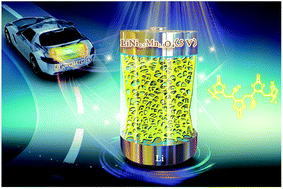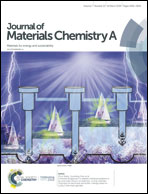An intricately designed poly(vinylene carbonate-acrylonitrile) copolymer electrolyte enables 5 V lithium batteries†
Abstract
Despite their attractive properties such as high operating voltages and considerable rate capabilities, the commercialization of LiNi0.5Mn1.5O4 cathodes is plagued by rapid capacity fading that stems from the severe parasitic side reactions with conventional liquid carbonate based electrolytes at a high voltage exceeding 4.5 V (vs. Li+/Li). In this work, a poly(vinylene carbonate-acrylonitrile) based gel polymer electrolyte (PVN-GPE) is intricately designed by copolymerizing acrylonitrile with vinylene carbonate. The intricately designed PVN-GPE can exhibit superior compatibility with LiNi0.5Mn1.5O4 cathodes, in order to address the above-mentioned severe parasitic side reactions. When evaluating the electrochemical properties of LiNi0.5Mn1.5O4/graphite full cells assembled with the PVN-GPE, an outstanding cycling stability (with a capacity retention of 93.2% after 200 cycles) has been achieved, which is far more superior to that of conventional liquid electrolytes. It is noted that the introduction of vinylene carbonate endows the PVN-GPE with improved interfacial compatibility towards lithium anodes, which can efficiently suppress the formation of lithium dendrites and enables excellent cycling performance (with a capacity retention of 90% after 200 cycles) of LiNi0.5Mn1.5O4/Li metal batteries. Our work presents an intriguing 5 V class high-voltage polymer electrolyte with superior performance and will boost the development of high-energy-density lithium batteries.

- This article is part of the themed collection: 2019 Journal of Materials Chemistry A HOT Papers


 Please wait while we load your content...
Please wait while we load your content...